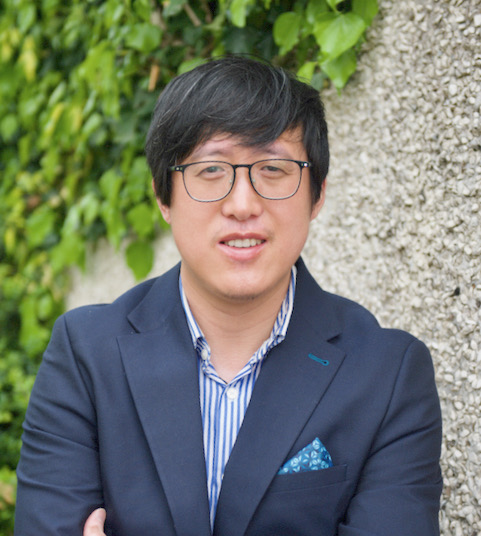“I firmly believe that nanomedicine will play a significant role in disease prevention.”
Thursday, 26 October, 2023
Nan Zhang (pictured below) is Assistant Professor in the School of Mechanical and Materials Engineering in University College Dublin. In what is often referred to as ‘lab on a chip’ science, his research group focuses on developing mass-production technologies to bring innovative diagnostic devices from the laboratory to patients at an affordable cost.

Many of us are familiar with microfluidic-based covid tests, either as home kits or those used in airports or hospitals, when results are needed urgently.
“We can say that covid would be a good case to demonstrate microfluidic devices for emergency situations,” says Dr Zhang.
Now he and his team are working with an Irish diagnostic company on the development of a microfluidic cartridge - which looks like a CD or a DVD, and is referred to as lab-on-a-disk technology - for sepsis diagnosis.
Sepsis is a potentially life threatening complication of an infection that can affect anyone of any age, and is believed to account for some 20% of all global deaths.
“We can say that covid would be a good case to demonstrate microfluidic devices for emergency situations."
Dr Zhang is working with this company's technical team to optimise and scale up their prototype technologies to meet the challenges of clinical trials, for which these microfluidic cartridges will need to demonstrate high repeatability and consistency of results when collecting testing samples from patients.
“I'm trying to develop a bridge between the laboratory and mass production to really help the companies who are doing the laboratory research, the lab scientists, bring their technology forward for clinical trials and eventually for commercial validation as a product to benefit patients,” he says. “I'm actually sitting in between to help people really translate their technology to the clinical level. And eventually the business development team will come in to bring this technology to a commercial level. This translation stage is critical because 90% of projects actually fail at this point,” he adds.
“So I want to help this translation, help reduce the cost of the single cartridges, and bring that from the laboratory to mass production easier and faster.”
Cartridge-based microfluidics is a promising technology for clinical diagnostics. Miniaturising fluidic processes benefits high-level integration, high throughput and multi-objective disease detection. It enables contamination-free and fast biochemical analysis. A microfluidic-based platform has the potential to greatly expand the scope of point-of-care testing and other resource-limited applications. It cuts costs too, by dramatically reducing the quantity of reagents and samples required.
The size of the global lab-on-a-chip market was estimated at USD $5,698 (€5,402) million in 2021 and is projected to increase to USD $14,772 (€14,006) million by 2030.
“I'm trying to develop a bridge between the laboratory and mass production to really help the lab scientists bring their technology forward for clinical trials."
These microfluidic cartridges Dr Zhang has described can be used to make nanoparticles as a nanomedicine. Covid shone a light on nanomedicine - the application of nanotechnology in medicine for the diagnosis and treatment of disease - with messenger RNA (mRNA) vaccines emerging as a revolutionary tool to help combat the virus.
“The most successful application of nanomedicine so far in the world today is the covid mRNA vaccine,” says Dr Zhang. “Since the vaccine rollout there has been more investment, particularly in the greater Boston area of the US. Many companies are working on the application of nanomedicine for gene therapy, cell therapy, vaccine development, infectious disease, cancer, and more.”
Today, treatments of high toxicity can be administered with improved safety using nanotechnology, such as chemotherapeutic cancer drugs. Nanoparticles have the potential to more effectively target cancer cells and minimise the adverse side-effects associated with chemotherapy, which kills both cancer cells and healthy cells. This is because their tiny size allows for more precision treatment; ‘nano’ refers to the use of particles that are only a few hundred nanometres in size, significantly smaller than the width of a human hair.
Nanomedicine is also showing success at treating rare diseases, such as Epidermolysis Bullosa (EB) or Butterfly Skin, a group of incredibly painful genetic skin conditions that cause the skin to blister and tear at the slightest touch.
Last May the US Food and Drug Administration (FDA) approved a gene therapy wound healing ointment called Vyjuvek, developed by Krystal Biotech. It was the sixth gene therapy for rare inherited diseases approved by the FDA since 2017, with several others for treating blood cancer.
The concept of nanotechnology was first introduced in 1959 when physicist Richard Feynman gave a presentation on making things at the atomic and molecular levels. Nanotechnology is now regarded as the most promising technology of the twenty-first century.
“I firmly believe that nanomedicine will play a significant role in the future for disease treatment and microfluidic technology can really make a significant contribution,” says Dr Zhang. “I think this is a promising area that we can pursue.”
More Rising Stars